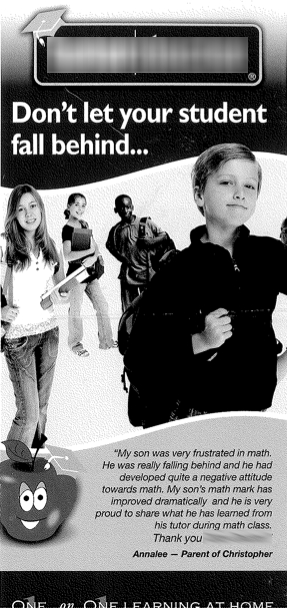This is continuing an exchange with “HeritageOfJapan” and now “japanexplorer” on the Education in Japan Community Blog that refers in part back to my previous posts (1 | 2 | 3) on the puzzle of the absence of single-sex options in the Japanese supplementary education industry.
In a further comment, “japanexplorer” writes,
“The news trend in recent years on juku stability and profitability suggests that it is getting more competitive and that many juku branches face closure, hence the huge number of mergers seen in recent years.”
Yes, I agree entirely. This is a trend that I will certainly be commenting about in the future on this blog. Briefly, kojinjuku are being squeezed geographically by the outward expansion of chains in metropolitan areas, and by the lack of children and the lack of competition for entry into higher education institutions in rural areas. They also face a very serious successor problem as many of the original founders of the first juku boom are retiring. Finally, they are facing a competitive squeeze from chains based on ICTs innovations and investments. At the same time, the supplementary education market is clearly also consolidating at the corporate end.
“Yes, in a few cosmopolitan centres, juku attendance remain strong, but all round the figures suggest with falling numbers of student population, any strategic moves must be cost-effective for the entire chain.”
But note that juku of all kinds are pushing hard into smaller and smaller groups of instruction suggesting significantly higher per-student revenue than even five years ago.
“I am still convinced that juku operators will not divide the classes on the basis of sex. That is not to say if parents overwhelmingly demand for it and UNLESS some juku’s president someday decides single-sex edu will be a great competitive marketing strategy(this is not unconceivable).”
Okay, so why hasn’t some jukucho decided to adopt this as a competitive marketing strategy? That is precisely my argument in trying to understand my original puzzle better.
Theoretically, it makes no sense in my mind to argue that operators shouldn’t divide their potential customers and exclude some. Businesses do this all the time, whether they are geographically rooted or not. And if anything, Japanese managers are well-known for pursuing niche strategies in a number of consumer markets. Anyone remember the Nissan Figaro, for example? Take another example: hair stylists seem to include single-sex as well men’s and women’s salons. Someone who is setting up a women’s salon is also given up on 50% of the customer population, but that seems obvious, even though there are no physiological differences between male and female hair (I assume).
Given the nature of the juku industry as really approximating an unfettered consumer market (at least in the big cities), there is no reason to think (at least none that comes to my mind) that nice strategies shouldn’t work.
Empirically as well, this argument doesn’t convince me. Juku operators are pursuing lots of niche strategies that are excluding a much greater proportion of the potential market than the 50% that a single-sex strategy would suggest.
Many juku thus specialize (sometimes even exclusively) on specific grades. If the argument about the lack of a viable niche strategy were true, this niche shouldn’t exist. Likewise, I’ve interviewed the operator of a fax-based juku. Not only did this strike me as somewhat quaint (even recognizing the greater penetration of the fax machine in Japan), but it is clearly a relatively small niche of parents/students who would be willing to communicate by fax.
I’ve also visited a juku that deliberately capped the number of its students at 24. In this case, this was obviously a very high-end strategy, but it also is a viable niche.
In fact, many kojinjuku cap the number of students, generally at about half of their historical maximum enrollment which typically came in the early 1990s.
Even the chain juku stratify students within grades on a fairly minute achievement/test result basis.
So, a niche strategy is not viable? I am not convinced.
As “japanexplorer” him/herself acknowledges, “Whatever the large juku operators that you are talking about may say, the nature of the juku market is niche-marketing.” Precisely, so why no single-sex juku?
“What each juku chain sells is the reputation of its methodology or material/curriculum package that has a proven track record or that has worked with parents themselves.”
Note that it is reputation not “proven track record”, as the only evidence of a track record offered is usually the number of “graduates” who succeeded in entrance examinations. There’s no attempt, nor do parents seem to demand, any kind of value-added evidence that would actually isolate the impact that a juku and/or its teaching methodology had on entrance examination success. Likewise with grade improvement for juku that are focused more on remedial instruction (another way in which the market is stratified, BTW).
“Secondly, many of the jukus cater largely to parents who cannot afford the private schooling route, and who therefore have already in fact decided to forego the ‘luxury’ factor of the better schooling environment/atmosphere (both physical and social), to make-do with the barebones goal of academic achievement.”
While this is certainly true for some segments of the juku market, I would doubt the “many” characterization. There are no statistics to my knowledge that would allow us to quantify such a portion of the market. Many students at private schools attend juku as well and there are plenty of relatively low-cost juku options, especially when you take into account that juku attendance is also a form of child care.
“Re your other comments: earlier in my survey of private schools and in putting together the pte school directory, I came across news articles in which schools like Kaiyo Academy and other new ones, suggestions that the singe-sex environment was a key consideration.”
That is very interesting as it contradicts the sense I had gained so far of the absence of pedagogical motivations. Any pointers for where to look for this information?
In my mind the debate continues and I welcome all further contributions.



